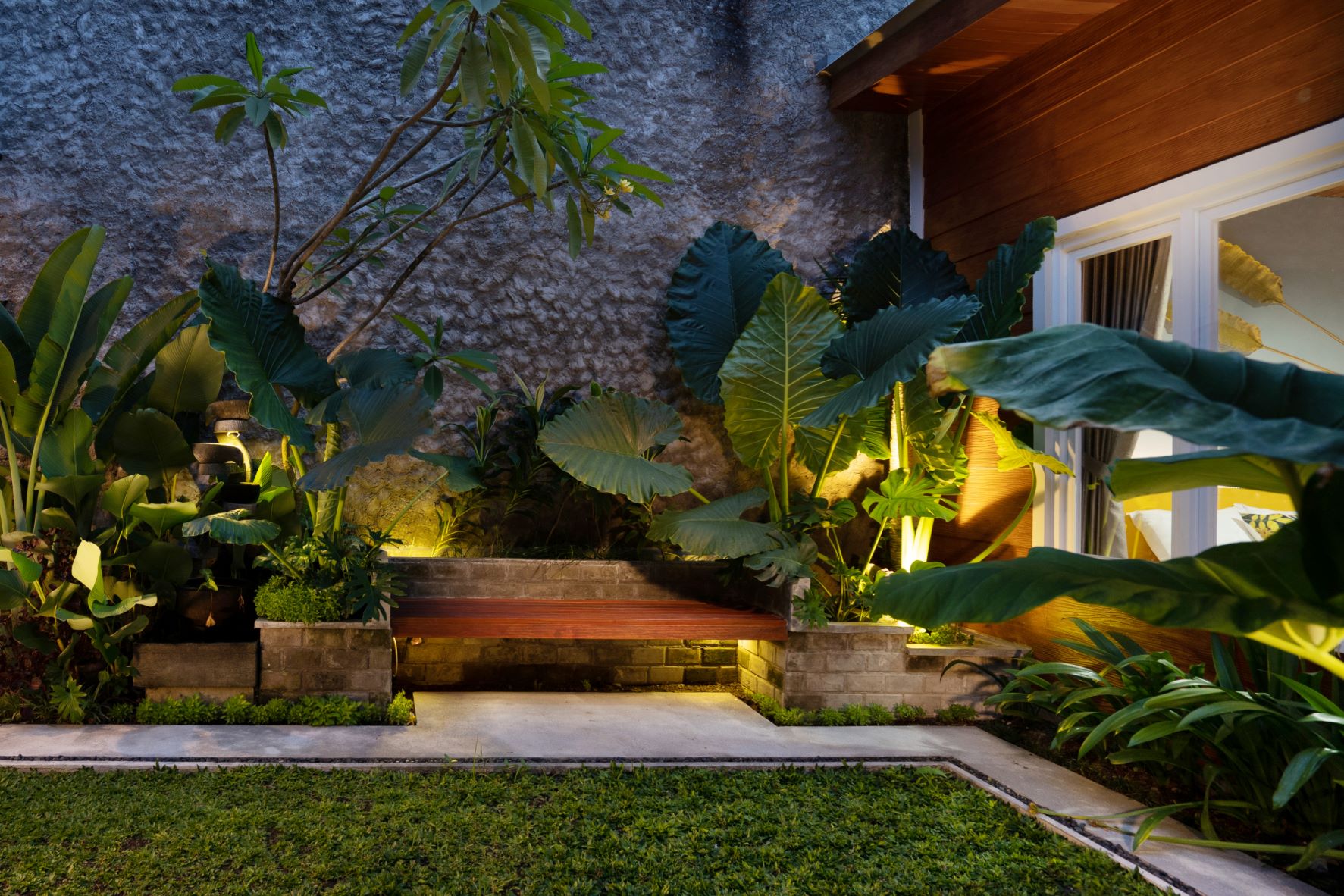Exterior lighting has both practical and aesthetic purposes. It can enhance the overall design of your exterior when the sun goes down. Also, it can make pathways and stairways safer, as well as improve your home’s security.
Safety and security
Lighting for safety and security should be your top priority. At your entry areas, you’ll want lights that are bright enough to illuminate both the entry and who is at the door. Overhead fixtures and sconces that cast a broad light work well for these areas.
Illuminate house numbers so that emergency vehicles and guests can easily find you. You also might want to have lights at gates and driveways, and around a pool. Motion-sensor lights will alert you to movement in different parts of your yard without their constantly being on.
Design
Balance light and dark spaces to give your outdoor area more depth and interest. For example, you might include more lighting in gathering spots on patios and decks; a light focused on the grill; overhead lights and sconces at entry points; and fixed lights to highlight one or two garden elements, such as a tree, bush, statue or a water feature.
Look for ways to create soft lighting effects and eliminate glare. Set lights so they shine downward and away from eye level. A good rule of thumb is to hide the light source whenever possible.
Environmental impact
Too many lights can create glare, which is hard on everyone’s eyesight and wastes energy. They also can disrupt the biological patterns of nocturnal animals and migratory birds. An overabundance of lights, particularly uplights, can contribute to light pollution.Light only what is needed and opt for warm yellow bulbs that are marked as dark-sky friendly.
Fixtures
Your options can range from fixed lights, bollard lights, projection lights or strip lights. Fixed lights are the most frequently used types of outdoor lighting. They consist of a single light that is positioned to point in one direction. They include uplights, downlights and spotlights.
Bollard lights are set on a post and the light itself generally can be seen from all four sides. These are good for path lights and post lights to delineate a space or boundary.
Projection lights or projector lights cast static or moving patterns in a range of colours on walls, fences or the ground.
Strip lights or linear lights are composed of a long row of light set into a fixture. They’re great for illuminating stair risers, the space underneath a bench, the length of a home’s eaves or the edge of a garden wall.
Smart technology
Smart lighting systems, similar to those used indoors, can make managing your outdoor lighting as simple as using a remote control or connecting to an app on your phone. You’ll be able to set timers for turning the lights on and off, as well as control the brightness and colours.
Want to book in a site visit, ask a question about our building process or talk through your project? Call SE Building Solutions today on 0415 772 983

